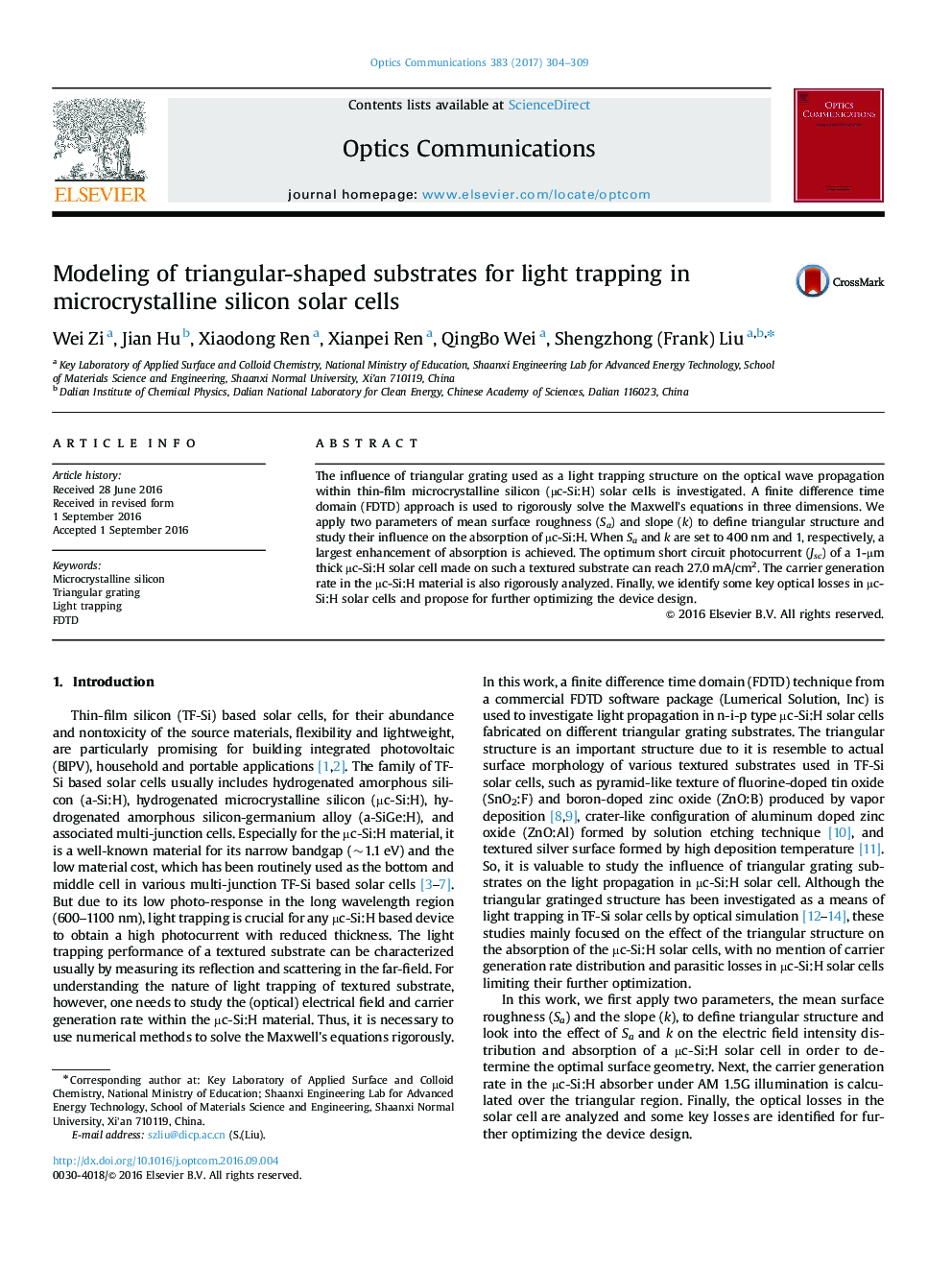| Article ID | Journal | Published Year | Pages | File Type |
|---|---|---|---|---|
| 7926949 | Optics Communications | 2017 | 6 Pages |
Abstract
The influence of triangular grating used as a light trapping structure on the optical wave propagation within thin-film microcrystalline silicon (µc-Si:H) solar cells is investigated. A finite difference time domain (FDTD) approach is used to rigorously solve the Maxwell's equations in three dimensions. We apply two parameters of mean surface roughness (Sa) and slope (k) to define triangular structure and study their influence on the absorption of µc-Si:H. When Sa and k are set to 400 nm and 1, respectively, a largest enhancement of absorption is achieved. The optimum short circuit photocurrent (Jsc) of a 1-µm thick µc-Si:H solar cell made on such a textured substrate can reach 27.0 mA/cm2. The carrier generation rate in the µc-Si:H material is also rigorously analyzed. Finally, we identify some key optical losses in µc-Si:H solar cells and propose for further optimizing the device design.
Related Topics
Physical Sciences and Engineering
Materials Science
Electronic, Optical and Magnetic Materials
Authors
Wei Zi, Jian Hu, Xiaodong Ren, Xianpei Ren, QingBo Wei, Shengzhong (Frank) Liu,
